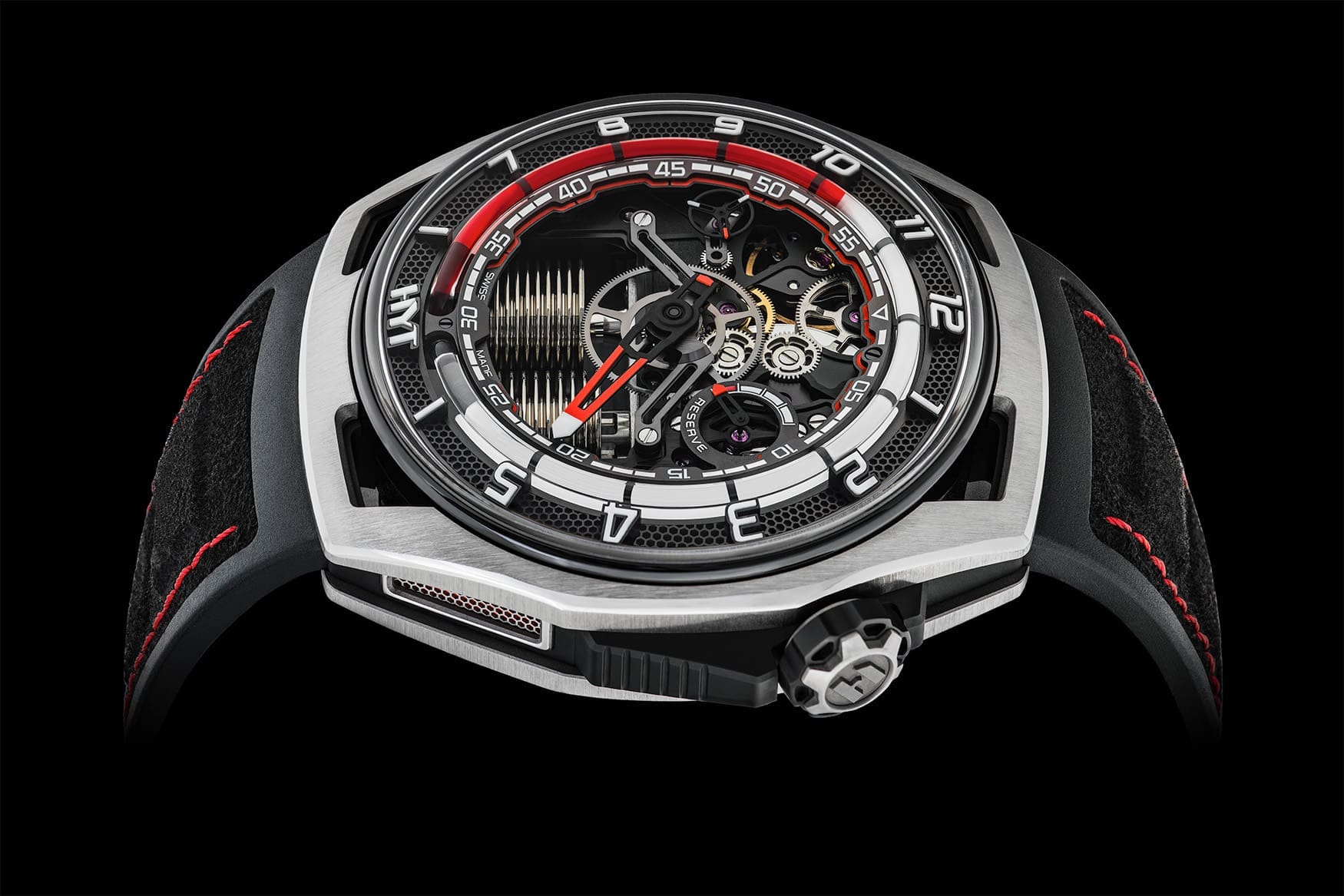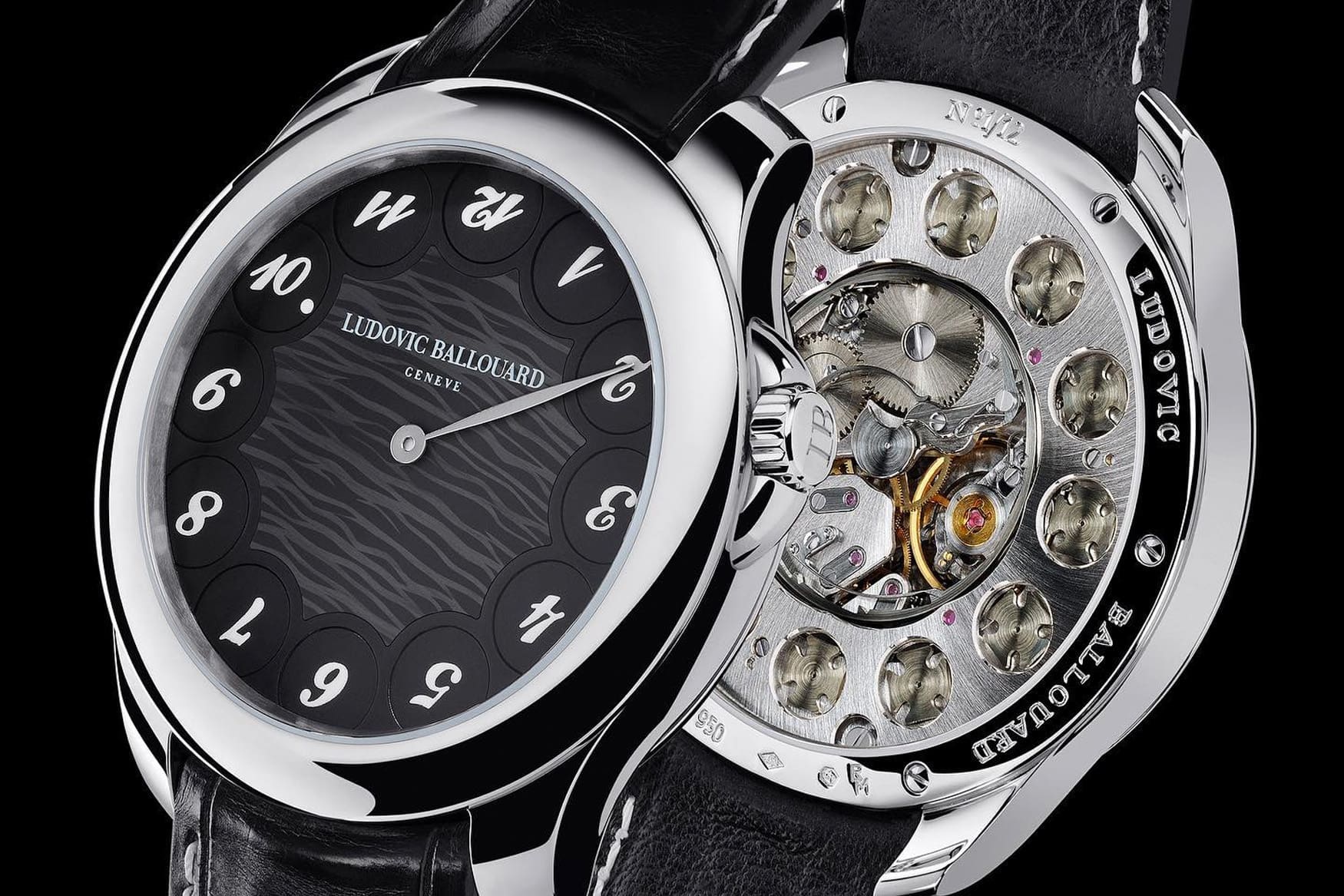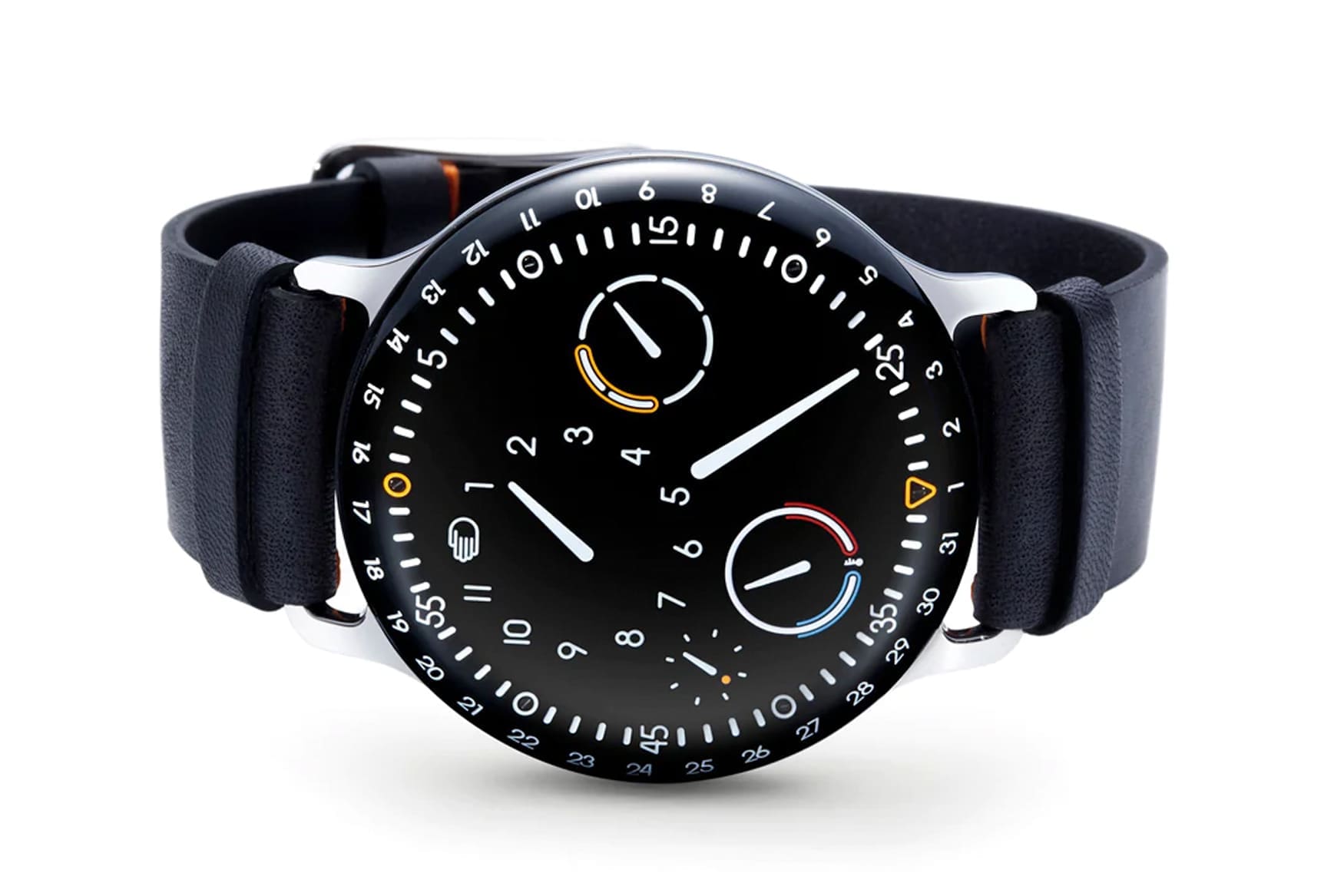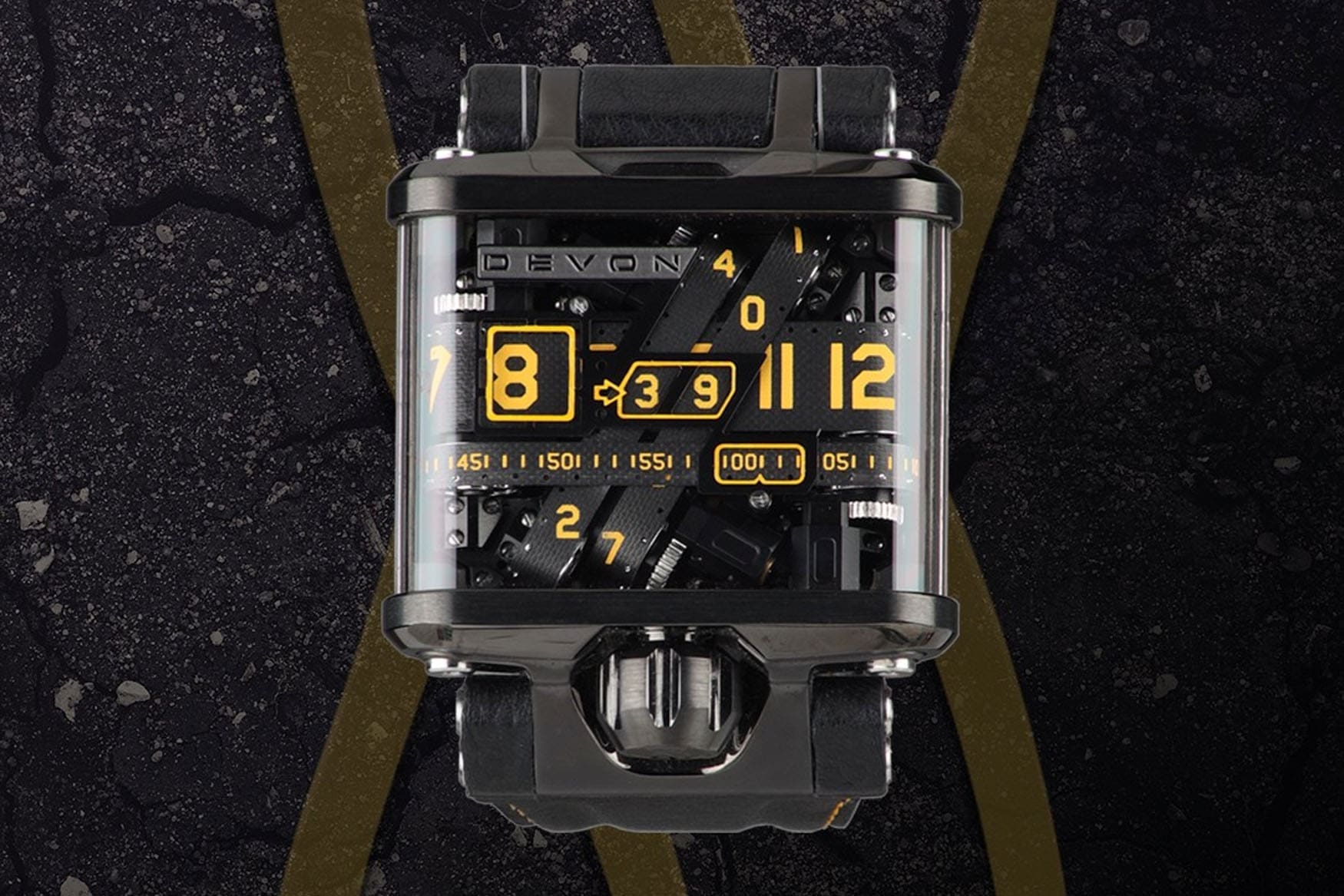The most unconventional timekeepers, for those who have gotten bored of easily telling the time
Tom AustinTimekeeping is a common practice which has fundamentals that have largely remained unchanged for centuries. Reaching as far back as 3,500 BCE, people used sundials to measure the time, relying on a shadow cast by the sun moving across the sky throughout the day. Luckily for us, things moved on a little in the 15th century and we began to see the emergence of conventional clocks, kind of like the ones we know today. The passing of time remains as eternal as ever, and so does the artistry with which we showcase the ways in which we showcase it. Furthermore, modern technologies in manufacturing mean that we don’t have to just rely on ye olde three-hander; things can now be much more interesting. Watches are no longer just tools; they’re often expressions of our own creativity and ingenuity, and some are even crazier than you think. Here are some of our favourite watches for unconventional time telling.
HYT Hastroid
You’ll know by now that liquids inside a watch can be catastrophic, and sadly many a mechanical watch has met its demise thanks to the principles of fluid dynamics. The folks at HYT on the other hand do not fear liquids, they embrace them. Founded in 2012, the brand took the scene by storm as the first watch brand to successfully use fluids to display the time. Despite quickly gathering momentum, the business closed its doors in 2021, before being revived some 6 months later, reborn under new leadership. Its uniqueness remained, utilising its mecha-fluidic module operating a liquid display on the dial of its new designs, most notably the Hastroid, the brand’s latest entry-level piece.
The almost skeletonised dial features a single minute hand, while the hours are taken care of by a capillary tube running around the circumference. These tubes are connected to a set of bellows, which compress or expand, allowing for the flow of two immiscible fluids, one coloured and one transparent. Where these two fluids meet corresponds with hours, and as the bellows function, the “marriage” of these two fluids, as HYT calls it, moves around the dial to display the time. It’s such a simple concept, which is part of its charm, but fitting that concept into a wristwatch is a different challenge altogether. The bellows have flexible walls that are four times thicker than a human hair, and the glass capillary containing the liquid is just 0.8mm thick. All are mated to an in-house mechanical movement, with a 72-hour power reserve. The brand has expanded on this with higher-end pieces, but even though the Hastroid is supposedly the entry-level, it’ll still blow you away with its CHF 75,000 price tag.
Ludovic Ballouard Upside Down
Another single-handed stunner, the Upside Down from Ludovic Ballouard is another example of a simplistic concept which turns timekeeping, quite literally, on its head. At a glance, you’d be forgiven for thinking this is a run-of-the-mill wristwatch with its elegantly polished casework and clean Arabic numeral dial. Look a little closer though and you’ll see there’s something not quite right about the hour markers. Only one is facing the correct way, and it just so happens to be the current hour. Et voilà, the Upside Down. It took Ludovic Ballouard just a year to develop the patented complication, which spins each disc marker at the top of each hour. Uniquely, the complication has its own power reserve to help maintain its total of 40 hours for just timekeeping.
With Ballouard’s input being responsible for some rather interesting pieces in the past, such as the Franck Muller Crazy Hours or the Harry Winston Opus 13, it’s expected that the Upside Down is an exquisitely finished wristwatch. The 41mm hand-finished and hand-engraved case is available in platinum or rose gold, and there are a multitude of dial finishes, too, with prices starting around CHF 87,000.
Ressence Type 3
Just when you thought a liquid-filled watch was rare enough, we have another. The Ressence Type 3 is an exciting experiment in legibility, and was the watch that really exploded Ressence onto the scene. First of all, it might look like it, but it’s not a smart watch. The Type 3 uses a series of orbiting discs which move the sub-dials around the entire circumference as the time moves. To add further visual confusion, the dial text and indices are crisp and clear, almost sitting on the surface of the domed crystal, even curving around its edges with zero distortion. This is all thanks to the upper part of the watch being flooded with oil, which cancels out the refraction and distortion caused by dials sitting under a curved crystal.
Then it hits you, where’s the crown? The 44mm grade 5 titanium case is crownless, which is again another striking feature. Winding is taken care of by a large wheel on the case back, which also looks after the day, date and time setting. This special crown is connected to an ETA 2824/2 base movement, modified with Ressence’s patented ROCS 3.5 module, allowing for the orbital movement of the dial configuration to take place. These modifications allow for other complications such as an oil temperature display and a 180-second stopwatch, while providing a 36-hour power reserve. The Type 3 is a stand-out piece in Ressence’s growing range, being the one that really caught everyone’s attention, priced at CHF 38,200.
Devon Tread 1
You can always rely on Americans to go bigger, and they don’t get much bigger than this. More bulldozer than watch, the Devon Tread 1 comes in at 53.3mm wide by 47mm tall and 19mm thick. Its vastness is primarily due to what Devon has managed to fit in the case, which is a complex weave of belts printed with numbers, and when aligned in the correct position, display the current time. It looks like a top down view of a miniature factory assembly line, especially when being set with everything moving, but the watch is in fact a hybrid. While mechanical in nature, the belts are driven by tiny motors, along with a quartz regulation device, all of which run from a lithium polymer battery. Given the amount of torque necessary to drive these components mechanically would be insane, so it’s no surprise the brand went the battery-powered route. Even so, the battery only lasts around two weeks with normal use, and charging is accomplished via a smartwatch-style magnetic wireless charger.
The Tread 1 isn’t what you’d call an everyday watch, though I’d commend anyone who tried to daily it. It’s a monster on the wrist, and unless you’re Arnold Schwarzenegger, it’s going to be a handful. It is however an awesome piece of engineering and definitely a novelty for watch geeks. You can just imagine the conversation starter this watch could be, and as far as technically being a quartz-powered watch, it’s one of the most interesting out there. It’s big, loud, and industrial, sticking a massive middle finger up to haute horlogerie. The Devon Tread 1 is priced at CHF 17,640.
Urwerk UR120
Arguably, the king of unconventional timekeeping is Urwerk. Pushing boundaries since 1997, founders Martin Frei and Felix Baumgartner joined forces with a vision to blend futurism with the world of haute horlogerie. The current iteration of Uwerk’s evolution, or “mutation” as they call it, is the UR120. Taking elements from the discontinued UR110 and repackaging them into something sleeker, thinner and easier to use. The watch is large at 47mm x 44mm, but it’s to be expected with a design like this; nobody wants to hide it. The clamshell case design is crafted in stainless steel and titanium, sandblasted for a smooth finish. Hidden under a flip-up cap is a crown at 12 o’clock for winding and setting.
The in-house UR-20.01 movement features the orbiting satellite complications which are now synonymous with the brand. While the display is complex, the movement itself is relatively traditional, with a lever escapement and a 48-hour power reserve. If you’re not used to reading these, they can be a little difficult to get used to, eventually becoming second nature. Overall, Urwerks have always been some of the most striking wristwatches on the market, a testament to the brand’s ability to blend futuristic, space-age design with exceptional craftsmanship. None of that comes cheap though, with the UR120 clocking in at CHF 133,000.










